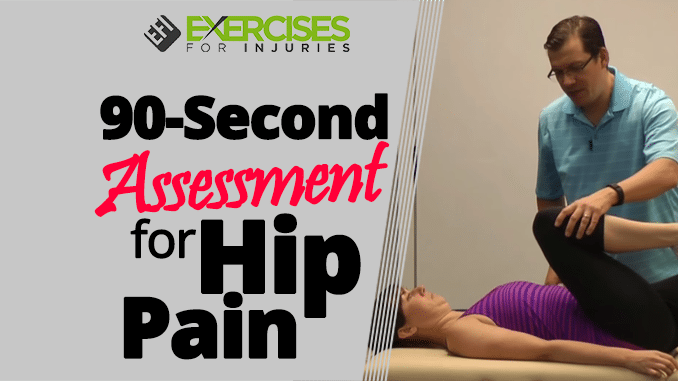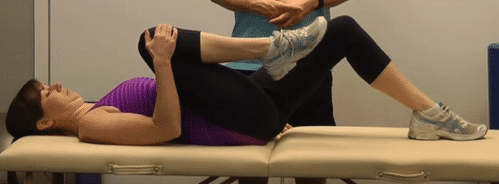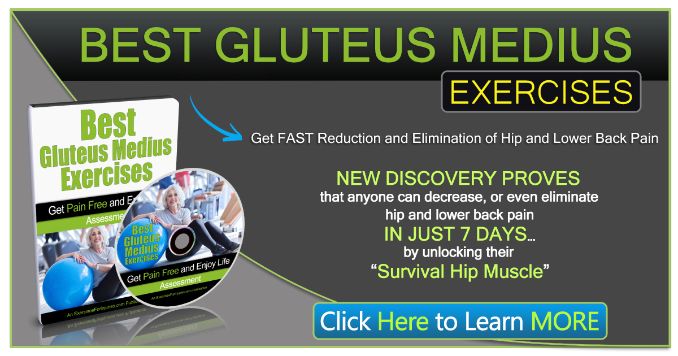
One of the most common issues faced by people today is hip pain. From athletes to the elderly, we all experience some sort of hip pain at some point in our lives. The good news is that it’s not that hard to get rid of this pain. This article will take you through a simple, step-by-step process with practical tips on how you can find relief from your hip pain quickly and easily by doing hip pain assessment.
90-Second Hip Pain Assessment
CLICK HERE to watch the YouTube video.
Hip Pain
Hip pain can be caused by a wide variety of conditions and problems. The most common causes are hip fractures, pelvic injuries, or herniated discs in the spine. Pain may also come from other sources such as arthritis, bursitis, muscle strain, or tendonitis. If your pain is constant but doesn’t radiate to one particular area of your body then it’s probably coming from an issue with muscles attached to the pelvis (the glutes).
Types of Hip Pain
There are numerous types of hip pain that can occur. Some of the more common types of hip pain include:
- Pain in one or both hips
- Pain that worsens when you sit for long periods of time or stand for long periods of time
- Sharp or shooting pain
- A dull ache, stiffness, or a burning sensation
Each individual experience with this issue is different and the cause for your pain might be different as well. It’s best to consult with your doctor if you know you’re experiencing something more than just normal soreness.
Tips for Getting Rid of Hip Pain
The best way to get rid of pain is with rest. Yet, sometimes it is hard to find the time for that. If you are looking for quick relief, here are some steps that can help you.
- Ice. It’s a no-brainer, but ice really does work wonders on this pain. Apply the cold therapy directly on your hip area, and leave it there for 10 minutes or until the pain goes away.
- Heat. If ice isn’t enough, heat can be just as effective in providing relief from hip pain. The best part about heat therapy is that it can be done at home! Wrap up in a warm blanket or heated towel and place beneath your legs for 20 minutes.
- Muscle Manoeuvres. Those who experience hip pain may benefit from trying muscle maneuvers like stretching and strengthening exercises like squats, lunges, and arm raises to release tension from the hips and alleviate pressure on the joints.
- Pain Relievers. For those who need something stronger than ice or heat for their pain, over-the-counter medications are an undeniable option that could provide quick relief from discomfort caused by these injuries.
1. Hip Flexion
Hip Flexion
Lie down and bring your knee towards your chest. We are looking at getting about 110 to 130 degrees of hip flexion.
2. Hip Extension
Hip Extension
Lie on your stomach and keep your pelvis locked. Lift your leg and then lower back down. Aim for getting about 30 degrees of hip extension.
When going through the assessment, you want to be close to or ideally at 30 degrees of hip extension. If you are not, you need to work on the tension, flexibility and strength around the hip in order to reach the appropriate degree. Going through a little assessment like this gives insight on the different types of movements and exercises that you need to focus on if you have hip pain.
3. Rotation of the Hip
Rotation of the Hip
Raise your knee so your knee and thigh are in perfect alignment with your hip. Go through the rotation in both directions. External rotation happens when the thigh is rotating out at 45 degrees and the heel comes in. Internal rotation happens when the thigh is rotating in at 40 degrees and the heel comes out.
4. Abduction
Abduction
Bring the leg out to the side. Ideally, we want 45 to 50 degrees of abduction.
5. Adduction
Adduction
Your leg is in line with your hips. Bring your leg in. Look for 20 to 30 degrees of adduction.
Give this quick 90-second hip pain assessment a go!
If you want to overcome your back and lower body injuries in a fast, simple, safe, and effective way, then check out The Best Gluteus Medius Exercises program.






